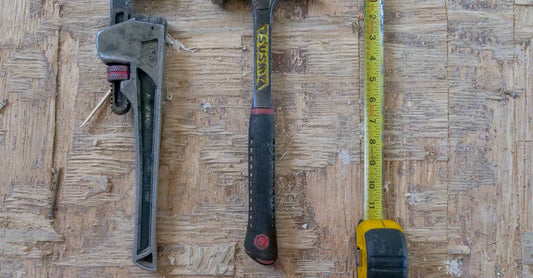Tung an Groov Jointin
Noun, Verb
The process of joining two pieces of material together, typically wood, by slotting one into the other.
Example usage: We used tongue and groove jointing to join the planks of wood together.
Most used in: Building and carpentry in the United States.
Most used by: Carpenters, builders, and other trades people.
Popularity: 8/10
Comedy Value: 5/10
Also see: Mortise and Tenon Joint, Rabbet Joint, Coping Joint, Dovetail Joint,
What is a Tongue and Groove Joint in Carpenter Construction?
Tongue and groove jointing is an important carpentry technique used to securely join two pieces of material together. It is a type of interlocking joint where one side of the joint has a protruding tongue and the other side has a corresponding groove. The tongue and groove fit together to create a tight seal and provide extra strength and stability to the joint.
These joints are commonly used in flooring and wall paneling, as well as for furniture and cabinetry. The technique is used to join together two pieces of wood, usually of the same thickness, but can also be used to join two different thicknesses, such as in the case of a door frame. It is also used to join other materials, such as metal and plastic.
This type of jointing is popular due to its strength and aesthetic appeal. It is also relatively easy to install and requires minimal tools. According to the National Association of Home Builders, tongue and groove jointing is the most popular type of flooring installation, accounting for nearly 70% of all flooring installations.
In summary, tongue and groove jointing is an important carpentry technique used to securely join two pieces of material together. It is a strong and aesthetically pleasing joint that is relatively easy to install and is commonly used in flooring, wall paneling, furniture and cabinetry.
.The Origin of the Tongue and Groove Jointing
Tongue and groove jointing is a type of carpentry technique used to join two pieces of wood together. The term was first used in the early 19th century in the United States and was used to describe the process of joining two pieces of wood at a right angle. The term specifically refers to the joint created by interlocking a tongue-shaped projection in one board with a similarly shaped groove in another.
The technique was initially used in the making of furniture and cabinets, but has since been adapted to many other uses, such as flooring, wall paneling, and molding. The concept of tongue and groove jointing has been around since at least the 16th century, but it was not until the 19th century that the term was first used.
Tongue and groove jointing is a simple but effective way of joining two pieces of wood together, and it is still widely used today. The technique is used in many carpentry applications, from furniture making to flooring and wall paneling. It is a popular way of joining wood because it is strong and aesthetically pleasing.




